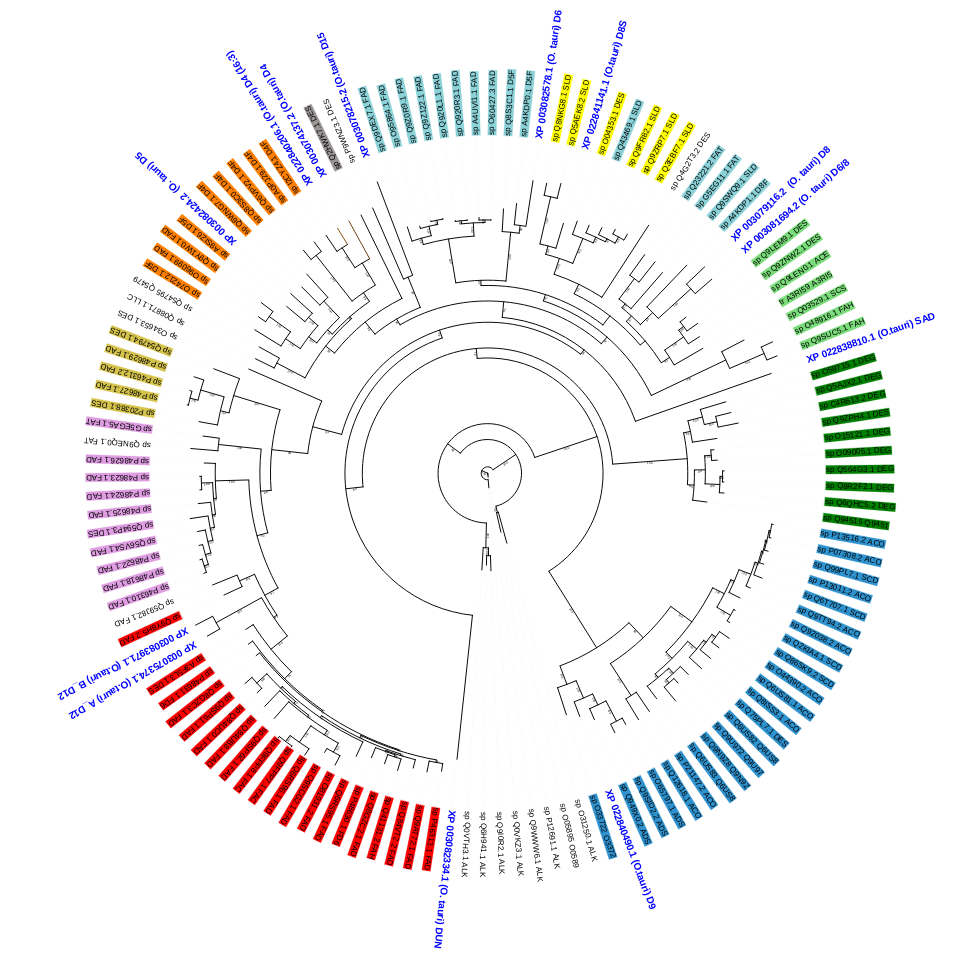Section: Application Domains
Genome and transcriptome annotation, to model function
Sequencing genomes and transcriptomes provides a picture of how a biological system can function, or does function under a given physiological condition. Simultaneous sequencing of a group of related organisms is now a routine procedure in biological laboratories for studying a behavior of interest, and provides a marvelous opportunity for building a comprehensive knowledge base of the relations between genomes. Key elements in mining these relations are: classifying the genes in related organisms and the reactions in their metabolic networks, recognizing the patterns that describe shared features, and highlighting specific differences.
Pleiade will develops applications in comparative genomics of related organisms, using new mathematical tools for representing compactly, at different scales of difference, comparisons between related genomes. New methods based on computational geometry refine these comparisons. Compact representations can be stored, exchanged, and combined. They will form the basis of new simultaneous genome annotation methods, linked directly to abductive inference methods for building functional models of the organisms and their communities.
Our ambition in biotechnology is to permit the design of synthetic or genetically selected organisms at an abstract level, and guide the modification or assembly of a new genome. Our effort is focused on two main applications: genetic engineering and synthetic biology of oil-producing organisms (biofuels in CAER, palm oils), and improving and selecting starter microorganisms used in winemaking (collaboration with the ISVV and the BioLaffort company).
Oil Palm lipid synthesis
The largest source of vegetable oil (32% of the world market share [24]) is the fruit mesocarp of the oil palm Elaeis guineensis, a remarkable tissue that can accumulate up to 90% oil, the highest level observed in the plant kingdom. The market share of oil palm is expected to increase in order to meet increased demand for vegetable oil, predicted to double by 2030 [18], be it as food or as a source of biofuels in Africa. A significant proportion of palm oil is produced on small estates that do not have access to efficient milling facilities, and run a great risk of spoilage through oil acidification. Improving palm oil quality through genetics and selection will result in economic gains [24] by addressing several targets such as improvement of oil yield, tuning of oil quality through the rate of unsaturated fatty acids or impairment of degradation processes. Furthermore, as genome biodiversity resides mostly in Africa, oil from African oil palms can vary greatly in fatty acid composition according to cultivar genetic differences and to weather conditions, and the precise mechanisms regulating this variability are not yet understood.
A growing body of molecular resources for studying oil palm fruit are making it possible to study and improve the quality and quantity of oil produced by oil palms. In particular, these oils can vary greatly in fatty acid composition, and while the precise mechanisms regulating this variability are not completely understood, establishing a link between oil palm genotype and phenotype appears increasingly feasible. Pleiade will work with the CNRS/UB UMR 5200 (LBM), a laboratory with an established reputation in studying fatty acid metabolism in E. guineensis, to improve understanding of the links between genetic diversity and oil production, and participate in developing applications.
Engineering pico-algae
|
Docosahexaenoic acid (DHA) is an essential nutriment for human brain tissue and can only be obtained from marine or riverine fish that live on phytoplankton and zooplankton, since human neurons lack the delta desaturase required for de novo synthesis of DHA. [21] Unfortunately, fishing is become less and less a sustainable resource. Since phytoplankton and zooplankton are the ultimate source of DHA consumed, there is considerable interest in obtaining DHA directly rather than through the intermediary of fish. A very promising approach is through the bio-engineering of pico-algae.
In order to produce the long-chain polyunsaturated fatty acids (LC-PUFA) needed for human nutrition, it is necessary to precisely engineer the desaturases that produce them. Desaturases are enzymes responsible for the introduction of double bonds into fatty acids. Desaturases are specific in recognizing their substrates and in placing the double bond in the proper place. The desaturases that produce the LC-PUFA necessary for human nutrition are present only in some species.
Our goal is to design methods to predict the substrate and region specificities for desaturases in algal species, particularly Ostreococcus tauri, the smallest photosynthetic eukaryote that can be cultivated. Thirteen desaturases are known in O. tauri and can be placed in the phylogeny of the desaturase family (figure 3. The biochemical and structural characterization of these enzymes is as yet very incomplete. This work is ongoing (see section 8.2.3) and requires close collaboration between biologists and computer scientists.



